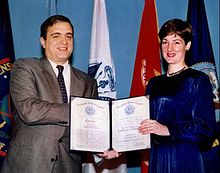|
YOUR SOURCE FOR NEWS AND ANALYSIS SINCE 1996 International News Analysis
THE ASSOCIATED PRESS AND CUBAN TYRANNYAugust 7, 2014 The Associated Press recently published a detailed exposé on a U.S. anti-Communist effort in the tropical gulag of Cuba. The AP appeared horrified that the operation was intended to "provoke unrest" on the island prison camp. The report was one of a "series" which reveal current "secret American political activity" in Cuba. The AP story concerned the sending of young Latin Americans to Cuba under the auspices of the U.S. Agency for International Development for the purpose of recruiting Cubans for "anti-government activism." The inexperienced infiltrators ultimately failed in their efforts. In revealing U.S. operations in Cuba and presenting the Communist Cuban regime as a victim of U.S. intrusion, the AP is following the pro-Communist, anti-freedom example of Herbert Matthews, The New York Times correspondent who gave invaluable publicity to Castro and his guerrillas in the early days of his revolution. The author Anthony DePalma entitled his biography of Matthews, The Man Who Invented Fidel Castro. The Communist Cuban government thought so highly of Matthews assistance, that it erected a permanent marker in the jungle clearing where Matthews and Castro first met. 
After the revolution, when the blood of anti-Castro Cubans began to flow, Matthews still supported Castro and refused to report on the carnage inflicted by the new, and increasingly overtly Communist, regime. Matthews enthusiasm for Castro continued, and was later shared to a large extent by other news figures including Dan Rather, Barbara Walters, Katie Couric, and a host of top U.S. news executives. The AP did make one nearly incisive remark about the Cuban regime. The article referred to Cuba as having "one of the world's most sophisticated counter-intelligence services." The Cuban intelligence network is modeled on the Stasi, the security service of the now defunct East German regime. Stasi is an abbreviation for Staatssicherheit or State Security, and was one of the most effective and feared of the Communist intelligence operations. Stasi experts trained their Cuban counterparts in all manner of domestic and foreign spy tradecraft, from planting electronic listening devices to recruiting neighbors to spy on neighbors for the regime. At the fall of the East German government, the Stasi employed some 90,000 individuals directly with some 350,000 collaborators out of a total population of about 16,600,000. In other words, about one in 35 East Germans were cooperating to some extend with the Stasi. Even the present German Chancellor, Angela Merkel, has been accused of having been connected with the Stasi. The Cuban Communists learned well their lessons from the Stasi experts. In Cuba today internal espionage is a thriving business, with the result that the entire island is a de factoprison, and neighbor is wary of neighbor. Some Leftists in the United States echo the Cuban regime's propaganda that there are no political prisoners in Cuba, but a page on the pro-Cuban freedom blog, Babalu, gives a list of 100 known political prisoners in Cuba. Cuba's intelligence services, however, have not merely turned Cuba into a gulag, Cuba is also a floating spy base. The Chinese, along with Cubans, operate an electronic surveillance system at Bejucal, and the Russians may be reopening their old spy center at Lourdes. The Cubans have also done a masterful job infiltrating not only anti-Castro organizations outside Cuba, but are also known to have infiltrated the U.S. government and other influential areas of American society. 
The single most significant example of Cuban infiltration into the U.S. government is the case of Ana Belen Montes, who was convicted in 2002 of spying for Cuba. Montes had worked for the Defense Intelligence Agency since 1985, was selected for DIA's Exceptional Analyst Program, and rose through the ranks to become the most senior analyst in the Cuban section. Montes was also spying for Communist Cuba since at least the time of her entrance into the DIA. Information is still coming out regarding exactly how DIA counterintelligence got enough information on Montes. There is a report that possibly someone from within Cuban intelligence itself betrayed Montes for reasons that are still unclear. Officers from DIA counterintelligence were certainly also closing in on Montes. Regardless of how the arrest came about, Montes plead guilty and was sentenced to 25 years in prison. Before Montes' arrest, the American public was afforded an inside look at the operations of a Cuban spy network operating within the United States when in 1998 the FBI closed in on a group calling itself La Red Avispa or the Wasp Network. Five Cuban agents were convicted in 2001 on charges ranging from conspiracy to commit espionage to murder. In Cuba, and among pro-Castro activists in the U.S., the prisoners were called the "Cuban Five." Not only did the FBI produce some 10,000 pages of evidence against the Cuban agents, but seven members of the Wasp Network turned state's evidence, a fact conveniently dismissed by those advocating the innocence of the Cuban Five. Two of the Wasp Network, Rene Gonzalez and Fernando Gonzalez (no relation to Rene), have served their sentences and returned to Cuba to a hero's welcome. Gerardo Hernandez is serving two consecutive life sentences for his part in the murder of four members of the air rescue group Brothers to the Rescue. On February 24, 1996, two of the groups planes, which were searching for Cuban refugees afloat between Cuba and the United States, were shot down over international waters by at least one Cuban MiG jet. The last of the Five, Ramon Labanio and Antonio Guerrero, were both originally sentenced to life for their espionage activities, but their sentences were later reduced to 30 and 22 years respectively. While the arrest and conviction of Montes and the five members of the Wasp Network is encouraging, members of the U.S. counterintelligence community and those seeking to resist the Communist tyranny in Cuba are convinced that Cuban spies remain in high and influential places in U.S. society and government. The AP misinforms its readers. The AP does a disservice to those who are risking their lives to resist Communist oppression in Cuba, and it completely ignores the Cuban regime's espionage offensive against the United States as well as against the Cuban people. As such the AP gives a distorted picture of what the United States is attempting to do in Cuba, and why. The Associated Press cannot be trusted when reporting on Cuba.
or use our postal mail address: International News Analysis #171 2364 Jackson St., Stoughton, WI 53589 Mr. Westerman is the editor/publisher of International News Analysis Today (www.inatoday.com.). International News Analysis Return to INA TODAY.com homepage |